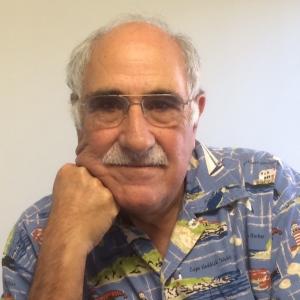Ervin R. Hafter

-
whatshotResearch Description
My lab utilizes psychophysics with human observers to model processes of hearing ranging from those at the lowest level of analysis at the cochlea to such higher-order activities as attention, perception of the auditory scene, music and speech. Our longest-held interests have dealt with spatial hearing with concentrations on the nature of binaural processing. In recent years, the developed of the theoretical work has looked into the neural enhancement of stimulus onsets as well as other tricks used by the binaural system to segregate signals from the background. Study of the "cocktail party effect" has led to uncovering of an underlying neural process that we call "binaural adaptation." A review of much of that work appears in a chapter in Binaural and Spatial Hearing. A different kind of project currently underway employs an artificial spatial environment constructed within a large anechoic chamber. Here, 16 many computer-controlled loudspeakers are used to create a simulated open field environment with virtual sources and echoic surfaces and these are coupled with a simulated visual field presented with a projection television. Studies so far have examined the source segregation and combination and the role played by those interactions in auditory distance perception, scene analysis and cancellation of echoes. In addition, we are measuring the combination of sensory cues and the nature of visual dominance in space. In a quite different set of experiments, we are studying the nature of shared attention, especially that which takes place between sensory modalities. Done in collaboration with Dr. A.-M. Bonnel, these studies utilize a cognitive technique called the "dual task" to examione the factors that determine when attention must be shared and when it does not. Our lab also keeps close contacts with individuals in the Center for New Music and Auditory Technology headed by Professor David Wessel. In music related work we involved with studies of the temporal shapes of auditory signals and their roles in determining rhythmic and intenive qualities to trains of sounds. Finally, we are engaged in large-scale modeling of the auditory functions we study through application of computer simulation.
-
placeSelected Publications
Saberi, K and Hafter, E. (1995)."A common neural code for frequency- and amplitude modluated sounds," Nature, April,.
Stecker, G.C. and Hafter, E.R. (1996)"An effect of temporal energy distribution on loudness," J. Acoust. Soc. Am., 100, 2700.Bonnel, A-M. And Hafter, E.R.(1997). "Divided attention betweem simultaneous auditory and visual signals," Perception and Psychophysics, (in press).
Hafter, E.R. (1997)."Binaural adaptation and the effectiveness of a stimulus beyond its onset" in Binaural and Spatial Hearing, R. Gilkey and T. Anderson (ed.), Lawrence Erlbaum Assoc.
E.R. Hafter, AM Bonnel and E. Gallun, (1997)."A role for memory in divided attention between two independent stimuli," Xith International Symposium on Hearing. Palmer, A. and Rees, A. Eds)(in press).
Hafter, E. R. and Trahiotis, C. (1997) "Functions of the Binaural System," in Handbook of Acoustics, M. Crocker (ed). Wiley.
-
filter_dramaTeaching